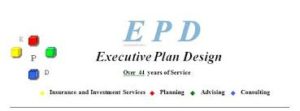Your Retirement . . . with Brian & Bob: Decision making needs to be inclusive of both past and present circumstances
Today’s average home size is three times the size it was 70 years ago.
By Robert Price and Brian J. Harrigan
 Remember the saying “monkey see monkey do”? Of course you do. But I’ll bet you may not know it applies to financial planning in 2021.
Remember the saying “monkey see monkey do”? Of course you do. But I’ll bet you may not know it applies to financial planning in 2021.
We as Gilroy residents can relate to this saying. We all remember instances of our childhood where we chose to imitate those around us. Whether it was a parent, sibling, friend, or teacher, people learn from those in the environment around them.
These experiences help form our successes and these victories in life can be tied directly to the significance we put on them during our decision making process.
The term “anchoring bias” is used to describe people who depend too heavily on one piece of information when making decisions. Like a metaphorical “kiss of death,” it can be detrimental to your financial future if you are not careful. With the world rapidly evolving, it is important to know the historical retirement planning strategies of previous generations and adjust them to the different landscape of society today.
Below are some examples of the most important things you should take into consideration when planning for retirement this day in age.
Lifespan
 A person’s life expectancy has significantly increased since last century. In 1950, the average person lived only 68 years. Medical technology and smarter lifestyle choices have extended this to age 90 with more people currently expected to reach age 100 than ever before. Developing strategies to address 20-30 years of retirement including the probability you’ll need long-term care are examples of items one should take under advisement.
A person’s life expectancy has significantly increased since last century. In 1950, the average person lived only 68 years. Medical technology and smarter lifestyle choices have extended this to age 90 with more people currently expected to reach age 100 than ever before. Developing strategies to address 20-30 years of retirement including the probability you’ll need long-term care are examples of items one should take under advisement.
Possible solutions to these issues include working longer, delaying election of social security income, purchasing products that guarantee a lifetime income and securing insurance to address end of life medical costs.
Housing
Today’s average home size is three times the size it was 70 years ago. When living longer today, and not necessarily in better health, many have a tough time taking care of larger homes both physically and mentally. As a result, many choose to downsize to something better-suited to their special needs.
Interest Rates
From 1970 to 1995, the US 10-year Treasury yield was 7.35 percent or higher. In comparison, this fell below 1 percent last year creating a new historical low. Low interest rates have augmented the way retirees plan. With lifespans lengthened, many have no choice but to hold a higher percentage of financial products with more risk to meet cash flow needs. Annuities, life insurance, reverse mortgages and alternative asset classes can all aid in solving the puzzle.
Employment
The average amount of time an employee stays with one company is now just a little more than four years. Gone are the days where someone remained with one company for life. Employers moving away from defined benefit plans like pensions to defined contribution plans like IRAs and 401ks certainly contribute to this change.
While this trend provides more freedom of choice in career paths, shifting risk away from the company to the employee garners a lot of responsibility. Saving and investing well must be properly orchestrated or the outcome could be disastrous.
 Future generations may require more help than ever before
Future generations may require more help than ever before
In 2019, four out of 10 people earned a bachelor’s degree compared to 3 percent of the population 70 years ago.
While a higher percentage of the population being more educated may sound great, the ever increasing cost of debt proves to be problematic for many.
This also means that many Gilroy parents are having to support their kids well into adulthood, which could adversely affect their “golden age” of retirement.
In summary, a common misconception is that things used to be simpler many years ago. The truth is that in some ways this is correct and others it is not. It is up to us to change with the times and not get hung up on personal biases like “anchoring.”
Decision making needs to be inclusive of both past and the present circumstances. Carefully consider the facts when weighing risks and be sure to leverage the expertise of a professional.
Financial advisors jobs are to help address client needs and build in the flexibility you’ll need to be successful in an ever-changing world. We encourage readers to consult a financial professional or call our office for a free consultation to put their best foot forward.
- Your Retirement … with Brian & Bob: Adjust your retirement portfolio to account for threat of inflation - January 28, 2022
- Your Retirement . . . with Brian & Bob: ‘Build Back Better Act’ passes economic package with tax changes - December 2, 2021
- Your Retirement . . . with Brian & Bob: Learn to maximize your pension by understanding all the options available - July 29, 2021
